Revit/Bim
Our in-house CAD team produce a wide range of bespoke drawings, Revit & 3D models to satisfy your project in a timely, efficient manner.
SEP are a leading BIM services provider, offering comprehensive BIM services for all varieties of building projects.
We have experience creating and formatting BIM information in various ways for all types of built assets from detailed drawings of complex chimney stacks with historical significance, to preparing 3d BIM models of castles and stadia.
We currently support numerous clients throughout the construction industry providing BIM services from concept design to the construction stage and handover. From project planning to tendering and remeasure, we offer comprehensive BIM services to construction professionals including videos, isometric images, text files, cross-sections, ifc files & bespoke file formats for a range of software applications.
What is Building Information Modelling (BIM)?
BIM stands for Building Information Modelling. The simplest definition of BIM is that it is 3D CAD (computer-aided design) for the construction industry but there is much more to it than that. BIM is a collaborative workflow for digital information that is used to create, manage and communicate 3D models of built assets within the built environment including all physical and functional characteristics.
BIM models comprise a series of linked data elements including project and asset information gathered in a ‘building model’. These data elements can include both information modelling of engineering-based data from construction documentation or non-technical information such as room finishes but are created within the BIM platform.
How does BIM support construction projects?
BIM information models can help to simplify and streamline the building process, improving communication between disciplines through a single 3D environment. It helps all stakeholders understand exactly what is required throughout the project life cycle. BIM has huge potential in supporting construction projects by transforming organisations into more efficient and productive businesses.
What are the benefits of BIM?
Building Information Modelling BIM allows the design and documentation process of a project to be carried out within a single platform as a digital representation of the project. BIM brings together all of the information you need for your construction project, enabling seamless collaboration between disciplines through linked information in a 3D environment.
The benefits of Building Information Modelling are more than just within the design process, it can also help with project management eliminating issues around information miscommunication that often causes disputes. By using a single document you have access to all of your information in one place, which can save time searching through multiple documents at various stages throughout the project.
BIM supports asset management digital transformation
The transition from paper-based to digital product information also ensures all information is up-to-date with efficient revision control, saving time and money in the long term whilst improving accuracy. In addition, the availability of 3D models can make it easier for facility managers to set out and maintain buildings, helping them plan maintenance more effectively.
BIM is a collaborative workflow for digital information
BIM brings together all of the information you need for your project. Whenever there is re-work or amendments on the design, the new changes are applied to all related information within the BIM system, eliminating issues around miscommunication.
All data elements are linked in the BIM model
The data elements in a BIM model are linked, which means you can search for an item in one discipline and link to it from another discipline. This provides a more coherent way of working, making cross-disciplinary disputes less likely.
BIM files are easily accessible and simple to share.
Building Information Modeling files can be accessed online, which means that they are easily accessible and simple to share with other members of your project team. The data elements in a BIM model are linked allowing you to search for an item and link it to another discipline. As well as the standard 2D floor plan and elevations, all information about the building and its construction is captured - including 3d geometry of each element.
BIM can improve safety
BIM is an essential tool for those working on complex multi-disciplinary projects where more information needs to be shared and understood across all disciplines. BIM can improve safety as everyone has access to the same information as well as providing a clear pathway for tasks and progress reporting.
What are BIM objects?
BIM objects provide information about the materials that make up a building. They are called objects because they contain both geometric (shape) and non-geometric (attribute) data, for example, geometry content like length or width is stored as part of its geometric data whereas properties like material type or assembly type are stored in the object's attribute(s).



What is Revit?
Revit is a building design software that allows users to model their built asset designs in 3D, both visually and by data structures, for applications such as construction documentation or analysis.
Revit is a standalone program that works on its own, used by a broad cross-section of professionals and businesses that include: architects, structure engineers, MEP Engineers, designers and contractors.
Its ease of use makes it especially useful for hosting project information where multiple disciplines are involved, such as mixed-use buildings or properties with unique design requirements. Revit allows users to work from one platform and create a complete range of construction documents, from 2D drawings through to fully rendered 3D presentations that mimic the final building.
What's the difference between BIM and Revit?
Simply put, Revit creates the model while BIM manages the data. At its core, Revit acts as a platform for storing information about your project in intelligent ways so you can easily access and manage it. BIM is not a piece of software; it’s an industry-wide collaborative initiative to create and deliver data that can be shared throughout the life cycle of a building, from design through construction and onto operation.
How can Revit help in implementing BIM?
Revit software offers a wide range of functionality, from dimensioning and material take-off through to visualisation and animation techniques. Revit provides 3D parametric modelling so you can create models that change as required. The intuitive interface enables ease of use with easy access to common commands.
3D parametric modelling, with intelligent information management that changes as your design updates. The established BIM workflow of Revit encourages an open system approach to building design documentation, which is why it's widely used within the industry. Because it enables clients to understand the design solutions you are proposing, it helps to speed up their decision-making process.
Revit has animation and visualisation capabilities. The Revit platform is widely used across the industry for creating stunning visuals, which are often required for presentations or marketing materials associated with high-end jobs.
Who uses BIM modelling?
BIM is widely used across the construction industry. BIM software has grown in popularity because it makes managing information and collaboration within teams easier, which means improved communication between project stakeholders. This can result in a more efficient project management process, leading to time and cost savings.
It includes a wide range of functionality for creating 2D drawings through to fully rendered 3D presentations that mimic the final building. The software supports several levels of user access throughout the project timeline; this ability to visualise information and manage workflow encourages improved communication on site.
BIM services are applicable to:
- Structural Engineers
- Civil Engineering Works
- Construction Works
- Architectural firms
- General Contractors
- Developers and property owners
- Facility Managers
Is BIM relevant to all design and construction projects?
Yes, BIM is applicable across the built environment, and many organisations throughout the supply chain are using BIM standards across their entire portfolio. The need for quality, accurate data, more efficient project management and the ability to re-use information are key reasons that more organisations are adopting BIM.
Is there a UK BIM Framework?
Yes, the UK BIM Framework is a UK-wide standard for implementing BIM during the whole life cycle of a design and construction project. The UK BIM framework covers all construction sequences across 4 phases:
- Design
- Build
- Operate
- Integrate
To learn more about the UK BIM Framework, visit their website.
How much do BIM services cost?
The cost of BIM services depends on factors such as the size, type and structure of your project. It's important to consider all stages of your project life cycle when thinking about running a building information model; developing 3D models, analysing and generating reports and visualising the design. What will you be using it for? These factors can all affect your project budget and requirements so it's vital you speak to a specialist to discuss the full extent of BIM services you'll need for your building.
Get a quote
To learn more about how SEP can support your construction project and BIM implementation, get in touch with us today.








